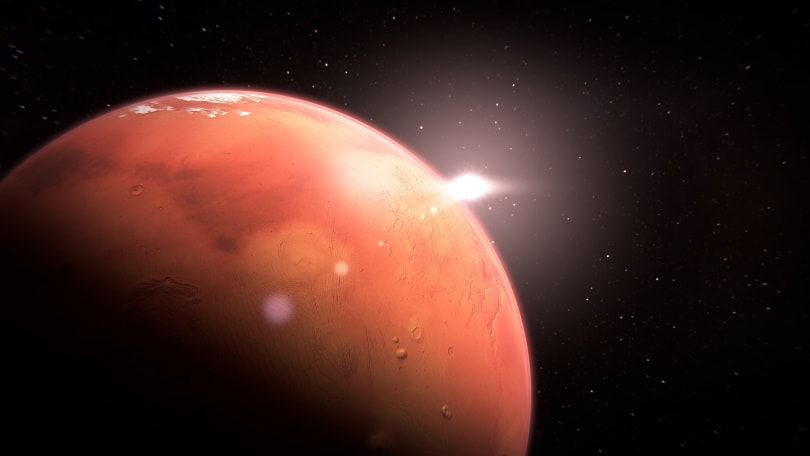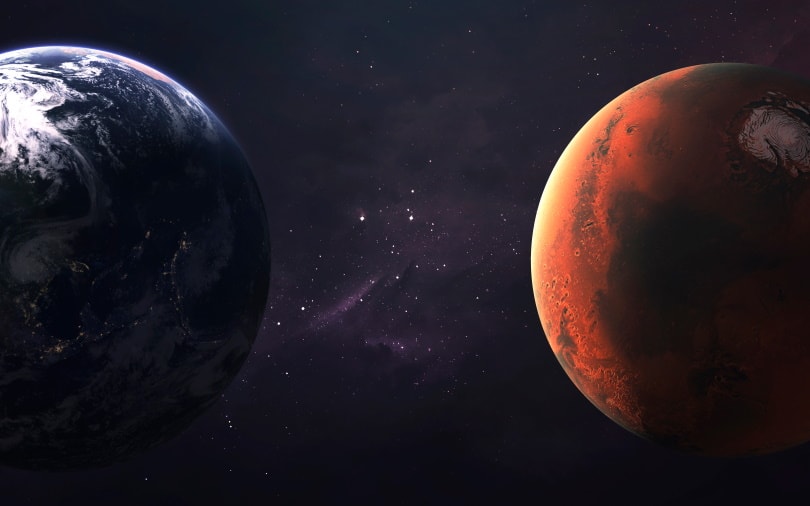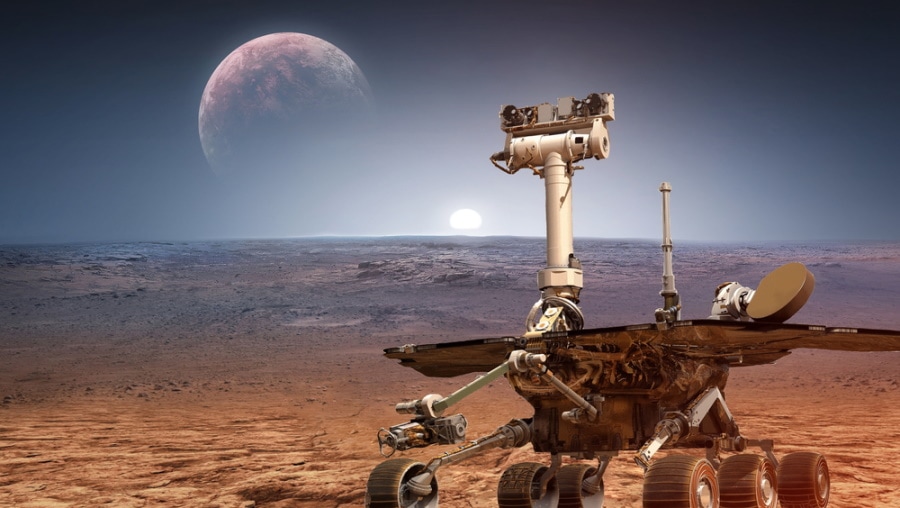How Long is a Day on Mars? How Long is a Year?
Last Updated on

Mars is a red, rocky, and dusty terrestrial planet that is one of our closest neighbors. Because Mars is so similar to our home planet, it is the prime candidate for making humanity a multiplanetary species. When the solar system was formed over four billion years ago1, both Earth and Mars formed from the same materials. As such, both planets developed similar heavy metal cores, rocky mantles, and a solid crust. Some scientists even believe that Mars once looked like Earth, with lakes, streams, oceans, and a warm climate.
However, as Mars’ tectonic activity subsided, it diverged from Earth to become the cold, dry, and inhospitable planet we know today. Due to ancient Mars’ history, scientists are keen to study it to understand Earth’s planetary evolution and the possibility of life on the “Red Planet.” Although Earth and Mars differ in many ways, both planets have similar solar cycles, warranting the extensive exploration of Mars. Since Mars and Earth are so similar, you may even assume that they have similar days and years. Continue reading to learn whether or not that is the case.

Sidereal Day vs. Solar Day
To understand how Martian time compares to Earth’s, we must first define a day, which can have a surprising number of definitions depending on the context. We are most familiar with a solar day, which is measured according to the Sun’s relative position in the sky. Our solar day on Earth is approximately 24 hours long, which is the time it takes for the Sun to make two successive passes across the meridian. The length of a solar day can vary depending on where the Earth is in its orbit around the Sun, which affects the rate of its rotation due to a variation of tidal forces.
A sidereal day, however, is measured based on the Earth’s position relative to the “fixed” stars in the sky. Essentially, this is the time it takes for a planet to spin about its axis so that the stars appear in the same position in the sky. A sidereal day on Earth is approximately 4 minutes shorter than a solar day, clocking in at approximately 23 hours, 56 minutes, and 4 seconds.

How Long is a Day on Mars?
Since Mars has a very similar solar cycle to Earth, it wouldn’t be too difficult to adjust to a Martian day. Mars’ sidereal day is 24 hours, 37 minutes, and 22 seconds long, while its solar day is approximately two minutes longer at 24 hours, 39 minutes, and 35 minutes long. If humanity ever colonizes Mars and becomes a multiplanetary species, it’s clear that we would have no trouble accustoming our routines to the Martian day.

How Long is a Year on Mars?
Because Mars is further from the Sun than the Earth, it must travel along a larger orbit every year. Therefore, Mars has a longer year than Earth, especially since it has a slightly slower orbital velocity as it travels at an average speed of 14.96 miles per second. Earth’s year is about 365 days long, while Mars’ is less than twice that at 687 days.

Conclusion
Overall, Mars is a fascinating planet that is like Earth in many ways. In ancient times, Mars may have even looked like the Earth, which gives scientists the clues necessary to understanding Earth’s planetary evolution. Both Earth and Mars have similar solar cycles, meaning their days are about the same length. Mars’ year, however, is about twice that of Earth’s due to its more remote position from the Sun. As a result, Mars is of particular interest to scientists and astronomers, who have sent multiple missions to its surface in an effort to understand its fascinating characteristics.
Featured Image Credit: Colin Behrens, Pixabay
About the Author Robert Sparks
Robert’s obsession with all things optical started early in life, when his optician father would bring home prototypes for Robert to play with. Nowadays, Robert is dedicated to helping others find the right optics for their needs. His hobbies include astronomy, astrophysics, and model building. Originally from Newark, NJ, he resides in Santa Fe, New Mexico, where the nighttime skies are filled with glittering stars.
Related Articles:
How to Collimate Binoculars: 9 Expert Tips
How to Clean a Refractor Telescope: Step-by-Step Guide
How to Clean a Telescope Eyepiece: Step-by-Step Guide
How to Clean a Rifle Scope: 8 Expert Tips
Can You Use Binoculars to Look At Stars? How to Choose the Right Pair
How to Choose Binoculars for Bird Watching: 10 Expert Tips
15 Crucial Facts About Ultraviolet Rays & the Sun
What Constellation Is Spica In? The Interesting Answer!
